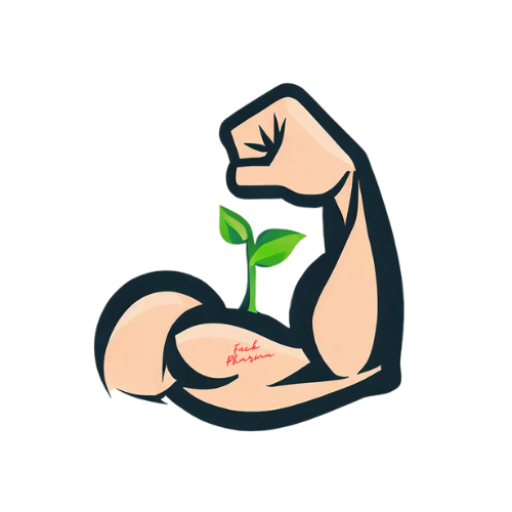
Healthy Kitchen Supplies

Why Using Good Quality Supplies is important in your Kitchen🍳
Using good quality supplies in your kitchen is essential because they enhance your cooking experience, improve safety, and deliver better results. High-quality tools and cookware perform more efficiently, last longer, and are made with safer materials. They make meal prep smoother, reduce frustration, and help you cook with confidence. Investing in durable, reliable kitchen items also saves money over time and encourages healthier, home-cooked meals.
- Improves Cooking Performance and Results
- Enhances Food Safety
- Saves Money in the Long Run
- Encourages Healthier Choices
Why Your Kitchen Tools Might Be Ruining Your Life 🔪
Many common kitchen supplies on the market today are made with low-quality materials that can compromise both your cooking and your health. Cheap pots and pans often have uneven heat distribution, causing food to burn or cook improperly. Poorly made utensils can melt, snap, or harbor bacteria in hard-to-clean crevices. Inexpensive plastic containers may leach harmful chemicals into your food, especially when exposed to heat. Dull knives not only make prep work frustrating but also increase the risk of injury. Over time, these low-grade tools wear out quickly, leading to constant replacements and unnecessary waste. Relying on subpar kitchen supplies can turn cooking into a hassle and negatively affect the quality, safety, and enjoyment of your meals.
Here are some Kitchen tools that might be killing You :
Cheap Nonstick Pans⚠️
Many low-quality nonstick pans are coated with Teflon (PTFE) or PFOA-based chemicals. When overheated, these coatings can release toxic fumes linked to health issues.
Plastic Food Storage Containers⚠️
Some plastics (especially older ones) contain BPA or phthalates, which can leach into food when microwaved or heated.
Plastic Cutting Boards⚠️
Over time, knife marks create deep grooves that trap bacteria. Some boards may also release microplastics into food.
Harsh Kitchen Cleaning Products⚠️
Many standard cleaners contain ammonia, bleach, or synthetic fragrances that can irritate your lungs, skin, and eyes—or leave behind chemical residues near food prep areas.
Low-Quality Air Fryers⚠️
Some air fryers use cheap nonstick coatings that can flake off and release toxic fumes or microplastics at high temperatures. In some cases, the internal plastics or adhesives may also off-gas when heated.
Better alternatives for your Kitchen🍽️ (buy links included)
Stainless Steel Cookware✔️
::::::::::::::::::::::::::::::::::::::::::::::::::
Stainless steel cookware is known for being durable, non-reactive, and safe for everyday cooking. Unlike nonstick or aluminum pans, stainless steel doesn’t leach harmful chemicals or react with acidic foods like tomatoes or vinegar.
Glass Containers✔️
:::::::::::::::::::::::::::::::::::::::
Glass containers are an excellent choice for food storage due to their non-toxic, durable, and non-porous nature. Unlike plastic, glass doesn’t leach chemicals into your food, even when exposed to heat.
Wooden Cutting Board✔️
:::::::::::::::::::::::::::::::::::::::::::::::
Wooden cutting boards are not only aesthetically pleasing but also gentle on your knives, helping them stay sharper longer. Unlike plastic boards, they have a natural antimicrobial property, which can help reduce the growth of bacteria.
Air Fryers with BPA-Free Interiors✔️
::::::::::::::::::::::::::::::::::::::::::::::::::
Air fryers with BPA-free interiors are designed to eliminate concerns about harmful chemicals leaching into your food. BPA (Bisphenol A) is a chemical often found in plastics, and when exposed to heat, it can break down and potentially contaminate food
Non-Toxic Kitchen Cleaning Products✔️
::::::::::::::::::::::::::::::::::::::::::::::::::::
Non-toxic kitchen cleaning products are formulated without harmful chemicals like ammonia, bleach, or synthetic fragrances, making them safer for both you and the environment.
The water your drinking might be killing you 💧
Tap Water
While tap water is treated to meet safety standards, it can still carry unwanted substances like heavy metals, chlorine, fluoride, pesticides, and even pharmaceutical residues. Aging pipes and outdated systems may allow these contaminants to enter your water, along with microplastics and industrial runoff. Over time, exposure to these toxins may lead to health issues like hormonal imbalances, gut problems, and chronic inflammation. Many people now use home filtration systems to improve water quality and reduce health risks.
Bottled Water
While bottled water is often marketed as a cleaner, safer alternative to tap water, it comes with hidden risks and downsides that can impact both your health and the environment. Despite its sleek packaging and claims of purity, bottled water may contain microplastics and chemical contaminants leached from the plastic over time—especially when exposed to heat. These substances can disrupt hormones and contribute to long-term health concerns. Additionally, the environmental cost is significant: billions of plastic bottles end up in landfills and oceans each year, polluting ecosystems and using up valuable natural resources.
Tap water Risks:
Chlorine & Chloramine⚠️
Used to disinfect water, these chemicals can dry out skin, irritate the gut, and impact the balance of healthy bacteria in your body.
Heavy Metals (like Lead or Copper)⚠️
Old pipes can leach metals into your water, which may contribute to fatigue, neurological issues, or developmental concerns in children.
Pesticide & Pharmaceutical Residue⚠️
Many people don’t realize their tap water can contain traces of pesticides, antibiotics, and pharmaceutical drugs. These hidden contaminants may disrupt hormones, weaken immunity, and impact long-term health. Even “safe” water isn’t always what it seems. Learn what’s really in your water and how to protect your body.
Bottled water Risks:
Microplastics in the Bottle⚠️
Studies have shown that bottled water often contains microplastic particles, which come from the plastic packaging itself.
Chemical Leaching⚠️
Many plastic bottles are made from PET (polyethylene terephthalate) or other plastics that can leach harmful chemicals like antimony, phthalates, and BPA (in some older bottles)—especially if the bottle is reused or exposed to sunlight.
Misleading Purity Claims⚠️
Bottled water isn’t always sourced from pristine springs—it often comes from the same municipal sources as tap water, just filtered and repackaged
Better alternatives for your Water 💦 (buy links included)
Reverse Osmosis System✔️
:::::::::::::::::::::::::::::::::::::::::::::::::
A reverse osmosis (RO) system is a highly effective water filter that removes up to 99% of contaminants, including heavy metals, fluoride, chlorine, and microplastics. It works by pushing water through a special membrane that blocks harmful substances. Some systems also add back healthy minerals, making it a safe and clean choice for drinking water at home.
Reverse Osmosis System (Sink)✔️
:::::::::::::::::::::::::::::::::::::::::::::::
A reverse osmosis (RO) system is a highly effective water filter that removes up to 99% of contaminants, including heavy metals, fluoride, chlorine, and microplastics. It works by pushing water through a special membrane that blocks harmful substances. Some systems also add back healthy minerals, making it a safe and clean choice for drinking water at home.
Spring Water✔️
::::::::::::::::::::::::::
Spring water comes from natural underground sources and flows to the surface on its own. It’s typically rich in minerals like calcium and magnesium and is often considered cleaner and fresher-tasting than tap water. When sourced responsibly and bottled at the source, it can be a healthy, natural option—though it’s still important to check for proper filtration and quality standards.
